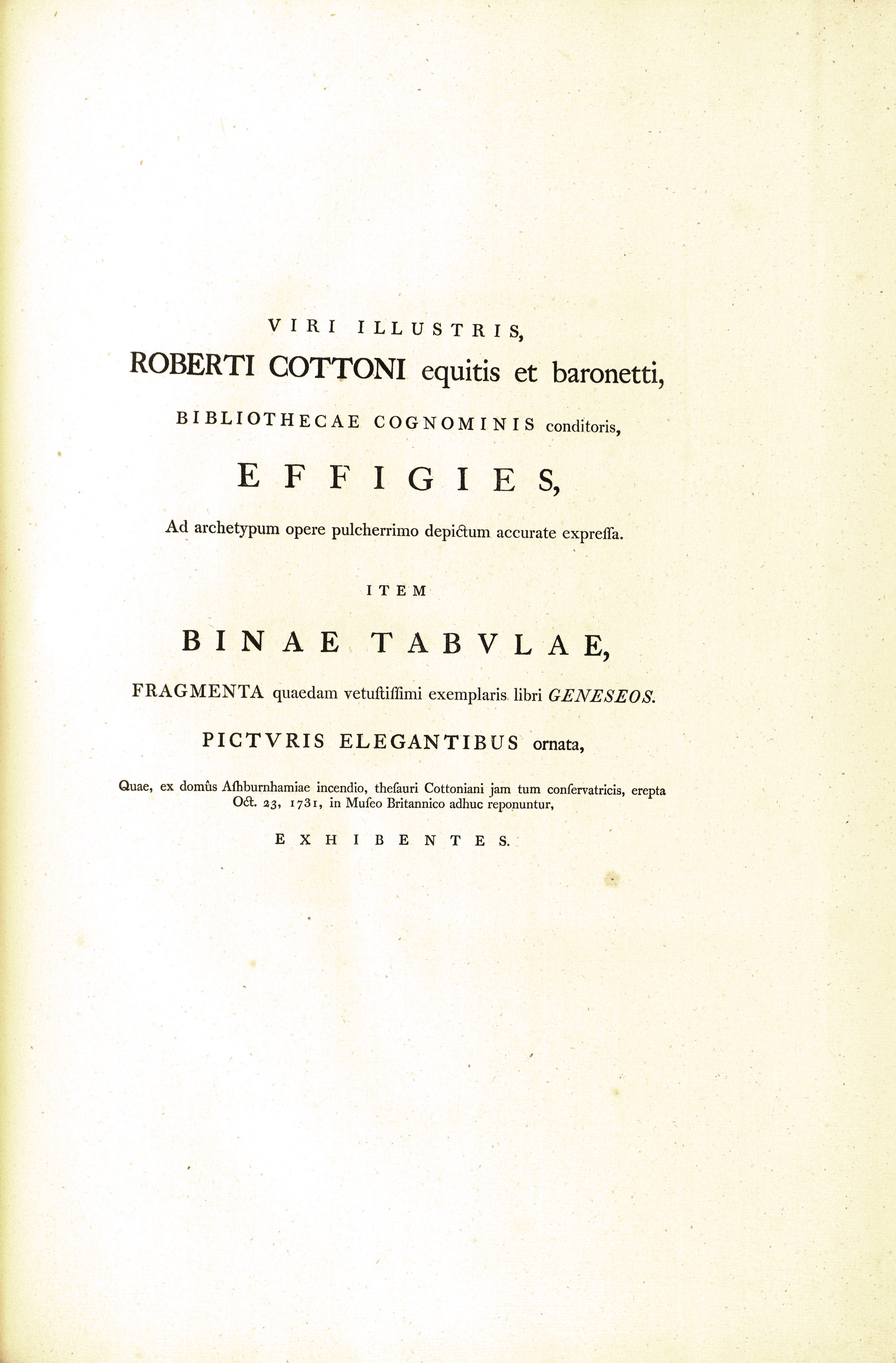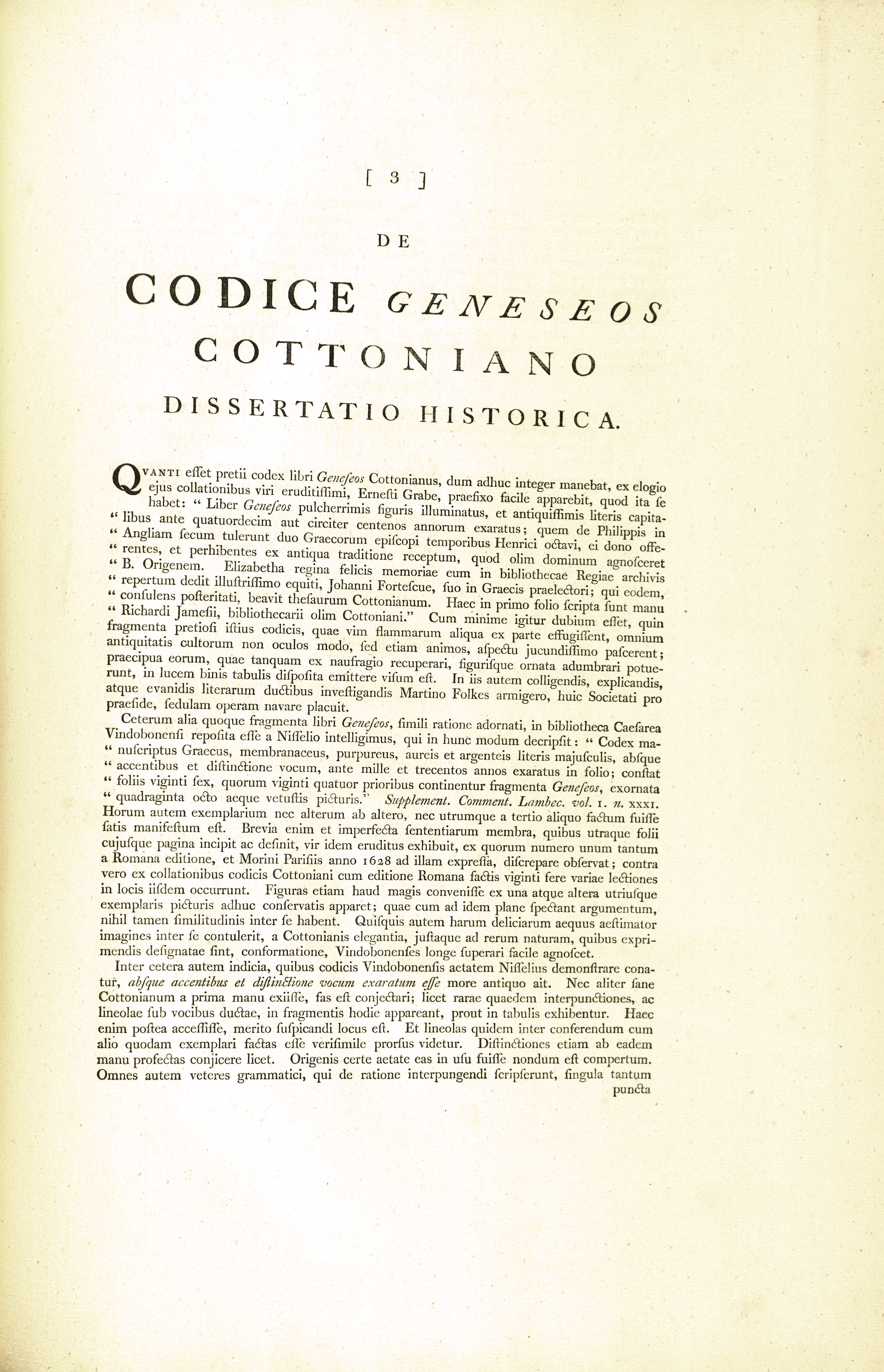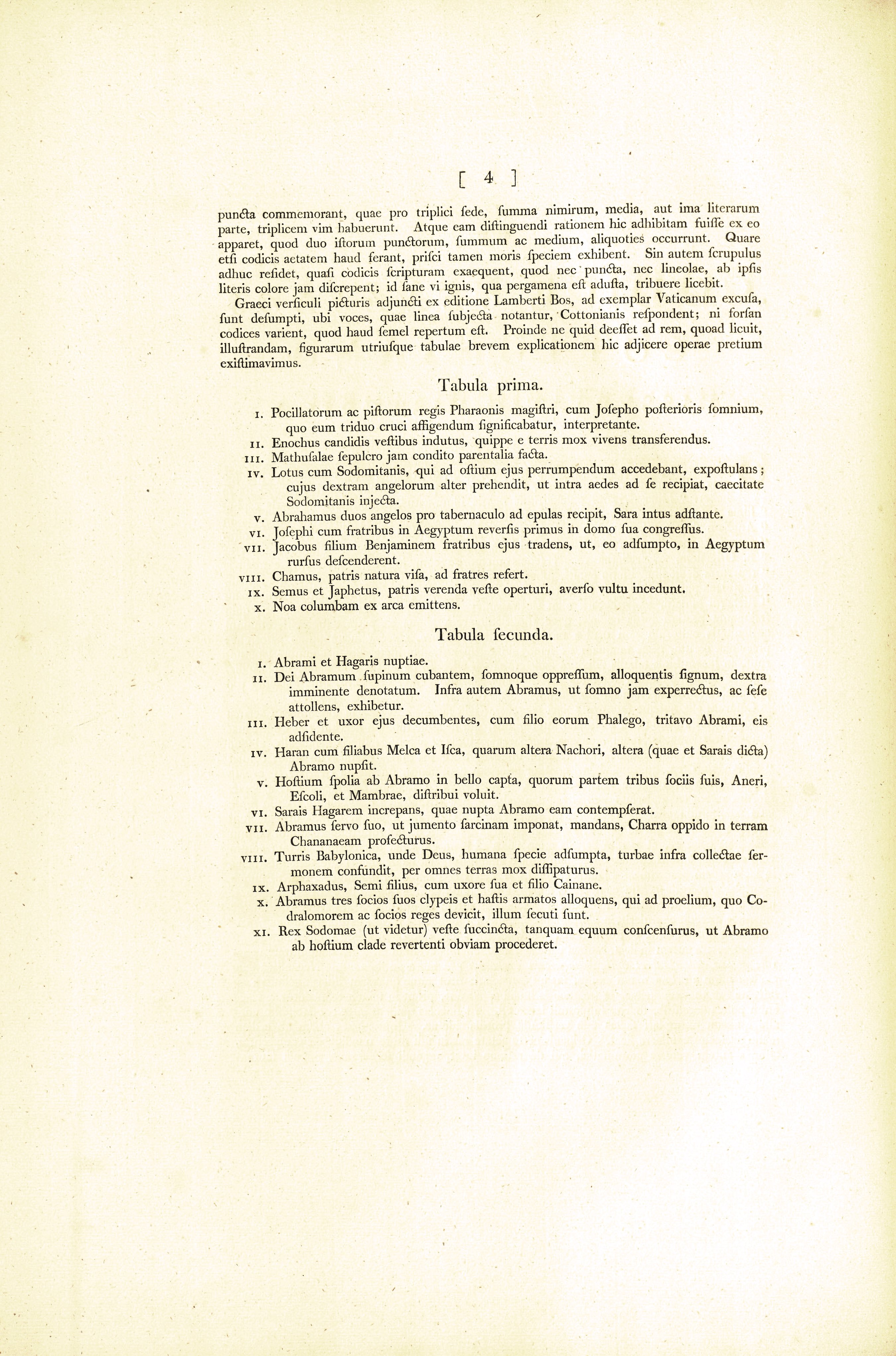which had three functions corresponding with their three positions, namely, at the top, in the middle, or at the bottom of letters. And it appears that that manner of marking has been applied here because two of those points, at the top and in the middle, sometimes occur. Therefore, even if they should not bear the age of the codex, nevertheless, they exhibit the mark[s] of ancient practice. But if doubt still remains whether they would almost equal the writing of the codex [in age], because neither points nor underlining are now distinguishable from the letters themselves in color, one may attribute [this uncertainty] to the force of [the] fire, by which the parchment was singed.
Greek verses, affixed to pictures, have been chosen from the edition of Lambert Bos, produced according to the Vatican copy, in which the underlined words correspond to [those in] Cotton’s; unless the codices should be found to vary, which has not once been found to be the case. Now then, so that nothing might be lacking, as far as it was needed to illustrate the subject, we judged it to be worth the effort to add here a brief explication of each plate of illustrations.
First Plate
I. The chief cupbearer and chief baker of king Pharaoh with Joseph interpreting the dream of the latter, which indicated that he would be nailed to the cross in three days. [Gen 40:5]
II. Enoch, dressed in white clothes, soon to be translated alive from earth. [Gen 5: 24-26]
III. Funeral rites for Methuselah, now buried in his tomb. [Gen 5: 27-29]
IV. Lot making inquiries with Sodomites who were arriving at his door to break it down; one of the angels takes his right hand to receive him within the house while the Sodomites are struck with blindness. [Gen 19:11]
V. Abraham receives two angels for a feast outside his tent while Sarah stands inside. [Gen 18:15]
VI. Joseph meeting at home with his brothers after they have returned to Egypt. [Gen. 43:30-31]
VII. Jacob entrusting his son Benjamin to his brothers so that, when he has been received, they might descend again to Egypt. [Gen. 43:13-14]
VIII. Ham, having seen his father’s nakedness, reports it to his brothers. [Gen. 9:22]
IX. Shem and Japheth, intending to cover their father’s privates with a cloak, enter, their faces averted. [Gen. 9:23]
X. Noah releasing a dove from the ark. [Gen 8:10-11]
Second Plate
I. The wedding of Abraham and Hagar. [Gen 16:4-5]
II. The sign of God addressing Abraham, lying on his back and in deep sleep, indicated by a right hand above him. Below, moreover, Abraham is seen as soon as he has awoken from sleep and has arisen. [Gen. 15:13]
III. Eber and his wife lying down, together with their son Peleg, distant ancestor of Abraham, seated next to them. [Gen. 11:15-17]
IV. Haran with his daughters Milcah and Iscah, of whom the first married Nahor, the latter, who was also called Sarah, Abraham. [Gen. 11:29-30]
V. Enemy spoils captured by Abraham in war, part of which he wished to be distributed to his three allies, Aner, Eschol, and Mamre. [Gen. 14:24]
VI. Sarah rebuking Hagar, who, once married to Abraham, had despised her. [Gen. 16:6-8]
VII. Abraham enjoining his slave to put a load on a pack animal, about to set out from the town of Charra [Ur?] for the land of Canaan. [Gen. 12:5-6]
VIII. The tower of Babel, where God, having assumed human form, confuses the speech of the crowd gathered below, soon about to scatter [them] throughout all lands. [Gen. 11:8]
IX. Arphachshad, son of Shem, with his wife and son Cainan. [Gen. 11:12-13]
X. Abraham, addressing three allies armed with shields and spears, who followed him to the battle in which he defeated Chedorlaomer and his allied kings. [Gen. 14:15-16]
XI. The king of Sodom, as it seems, his clothes girded as if about to mount a horse so as to set forth and intercept Abraham returning from his conquest of his enemy. [Gen. 14:17]



